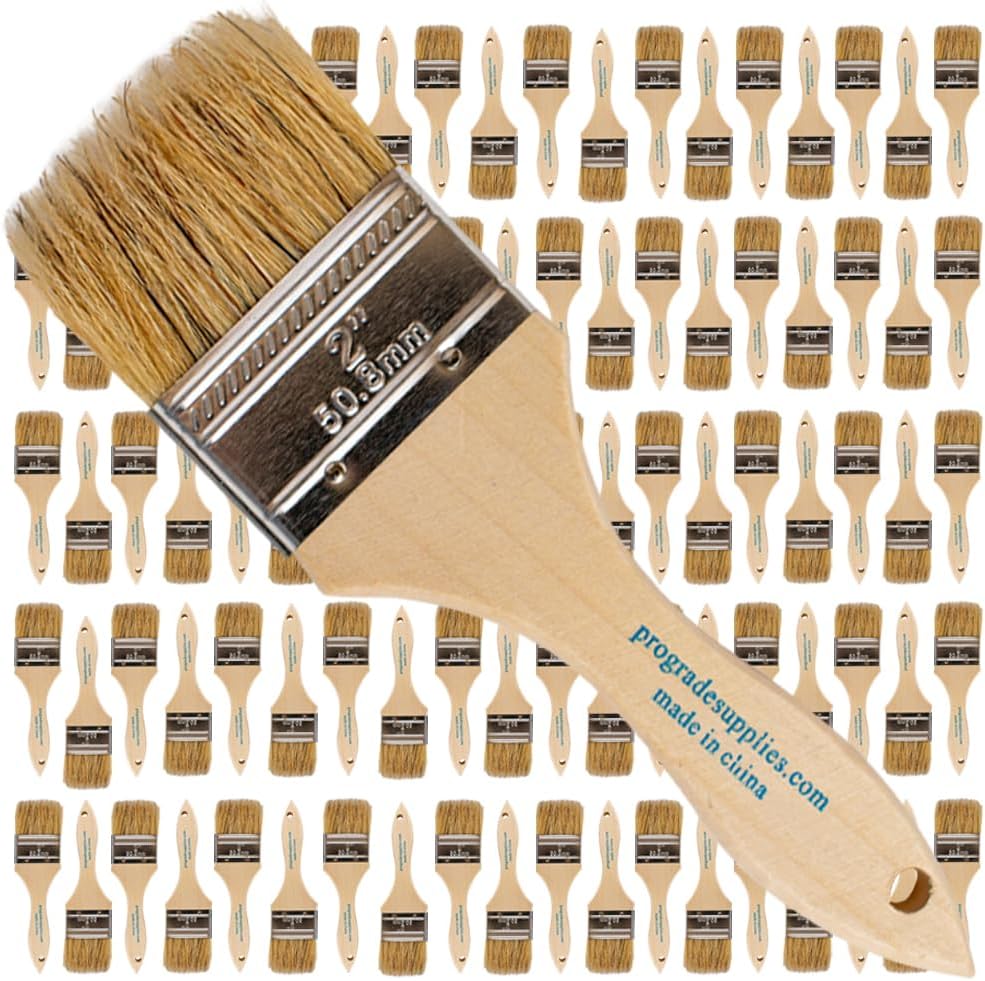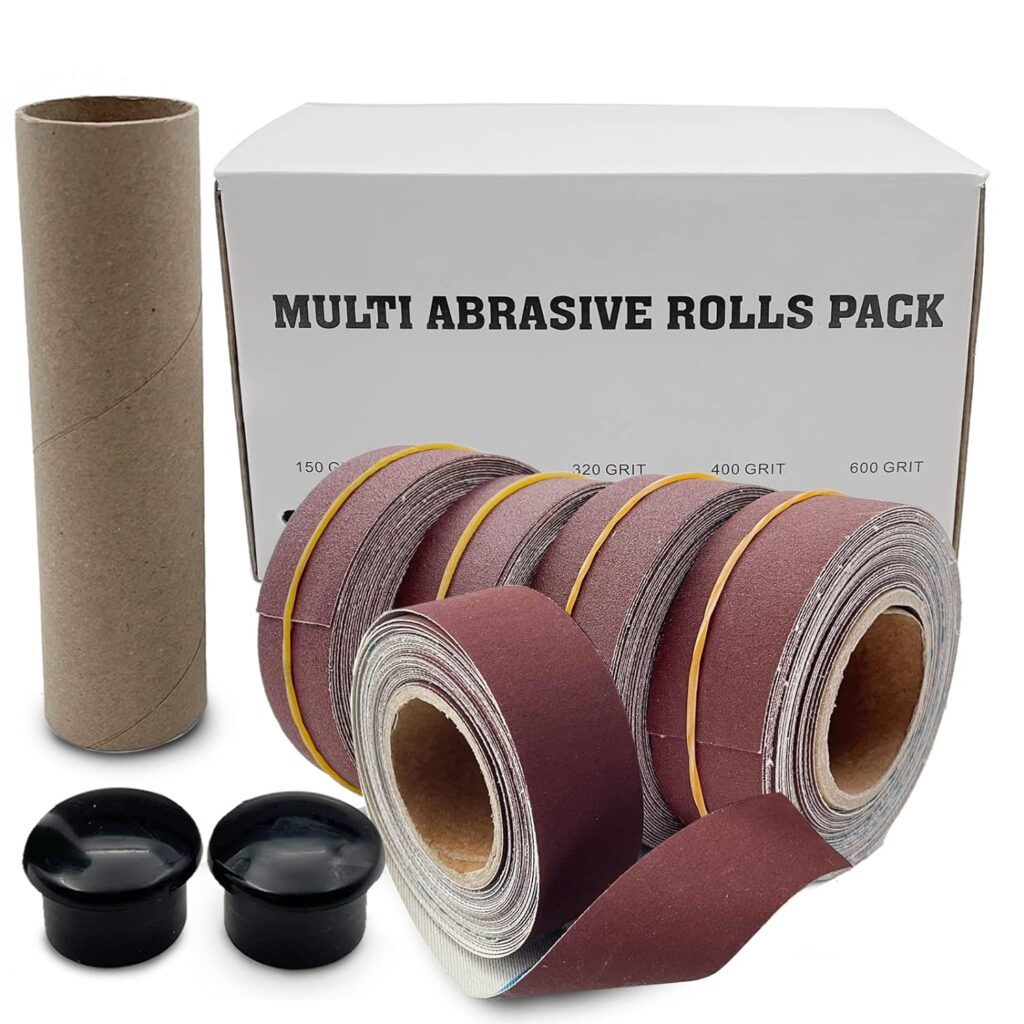Your interior doors play a bigger role in the beauty of your home than you might think. A fresh coat of paint can instantly transform them from dull and dated to vibrant and modern. But where do you start? The right approach and high-quality materials can transform your project into a masterpiece!
Paint for interior doors may seem like a simple weekend project, but achieving that smooth, flawless finish requires the right preparation, tools, and techniques. Whether you’re looking to refresh the look of your home or repair damaged and faded doors, this guide will help you achieve professional-level results. We’ll walk you through everything—from choosing the best paint to mastering the application process. By the end of this article, you’ll have the confidence to tackle your door painting project like a pro.
Why Paint Your Interior Doors ?
- Enhance Aesthetics: A fresh coat of paint can modernize your doors and elevate your home’s interior style.
- Refresh Worn Surfaces: Covers up scratches, scuffs, and fading to make your doors look brand new.
- Boost Property Value: Well-maintained and stylish doors can leave a lasting impression on potential buyers.
- Match Your Decor: Customize your doors to complement new furniture, wall colors, or design themes.
- Cost-Effective Makeover: A simple painting project can transform your space without the expense of replacing doors.
- Protect Against Wear and Tear: Paint acts as a barrier, protecting doors from moisture, stains, and general damage.
Choosing the Right Paint For Interior Doors
Types of Paint:
- Latex Paint: Quick-drying, low odor, and easy to clean—perfect for interior doors.
- Oil-Based Paint: Offers long-lasting durability and a smooth, high-quality finish.
Finishes:
- Matte: Ideal for a clean, understated look with minimal shine.
- Satin: Provides a soft sheen, making it both stylish and easy to maintain.
- Semi-Gloss & High-Gloss: These finishes are highly durable and perfect for areas with heavy traffic.
Color Selection:
- Consider complementary colors to blend your doors with your walls.
- Opt for bold or contrasting shades to make your doors stand out as a design feature.
Top Paint Brands:
- High-quality options include Sherwin-Williams, Benjamin Moore, Behr, and Rust-Oleum.
Important Tips:
- Always use paints labeled for doors and trim to ensure a smoother, longer-lasting finish.
- Test a small sample on your door before finalizing the color and finish.
Essential Tools and Materials
Buy Now
Preparing Your Door for Painting
Before you begin painting your interior door, proper preparation is key to ensuring a smooth, professional finish. Start by thoroughly cleaning the surface, removing dirt, dust, and grease, which can prevent the paint from adhering properly.
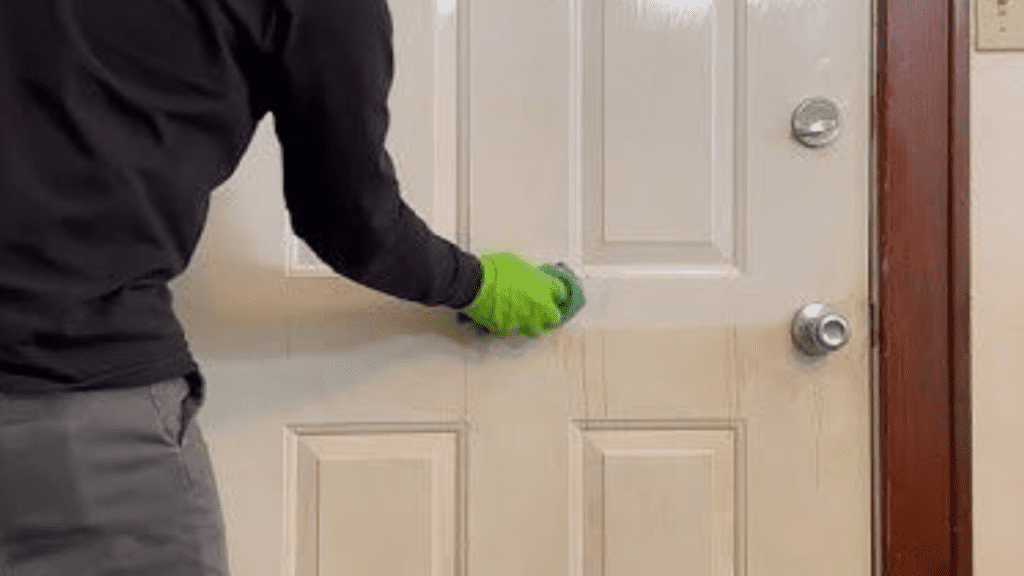
You can use a mild soap solution or degreaser for this step. Once the door is clean, inspect it for any imperfections such as scratches, dents, or cracks. These should be sanded down or filled with wood filler to create a smooth surface. Lightly sand the entire door, focusing on any shiny or uneven areas to ensure the paint will adhere well. If the door has an old, chipped finish, you may need to strip it completely to avoid any peeling or bubbling after painting. For a more polished look, consider polishing the door using similar techniques that you use to polish furniture at home, which helps achieve a smooth, high-gloss finish. Don’t forget to remove hardware, such as handles and locks, or use painter’s tape to cover them, making sure they remain clean and free of paint splatters. Finally, applying a coat of primer is highly recommended, especially if you’re changing the color or working with raw wood, as it helps the paint adhere and provides an even base. Taking the time to properly prepare your door will not only ensure a flawless paint job but will also extend the lifespan of your door’s finish.
Step-by-Step Painting Guide
Techniques for Applying Paint with a Brush vs. Roller
When painting interior doors, choosing the right paint application technique is crucial to achieving a flawless finish. Brushes and rollers are the two most common tools, each offering distinct advantages depending on the type of door and your intended purpose. Using a brush allows for greater control, especially around edges, trim, and intricate designs, making it the preferred tool for detailed areas or panel doors. A high-quality angled brush helps ensure precision and reduces the risk of overspray or uneven coverage. For smooth, flat surfaces, you can use a roller to apply a thin, even coat of paint. Rollers are especially effective for covering large, flat doors quickly, providing a consistent texture and finish. If you’re using a roller, it’s important to choose the right nap length: A short nap (3/16″ or 1/4″) is ideal for smooth surfaces, while a long nap (1/2″ or more) is better. While both tools can achieve professional results, combining them is often the best approach—using a brush for edges and corners and a roller for the center surface.
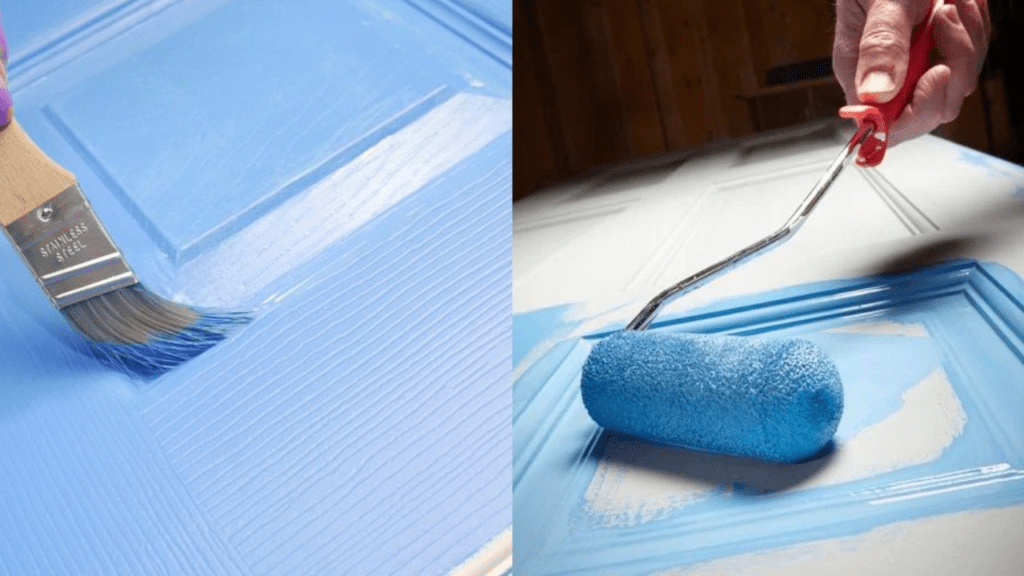
Both methods require the right technique to avoid common problems like streaks or drips. For example, when using a brush, apply paint in long, smooth strokes in the direction of the wood grain. With a roller, work in a W or M pattern to spread the paint evenly and eliminate roller marks. To achieve a uniform, polished finish, consider techniques used in other projects, such as how to polish concrete floors, where application and smoothing out imperfections are also key to a smooth, shiny result. Using both tools effectively will help you The interior door will receive a beautiful, professional-grade finish with minimal effort.
How to avoid drips, streaks, and uneven coverage
Achieving a flawless paint finish on interior doors requires careful technique to prevent common problems such as drips, streaks and uneven coverage. Preparation and precision are key during the application process. Start by making sure the surface is clean, smooth and free of imperfections. Sand any rough spots and apply a high-quality primer, which creates an even base and improves paint adhesion. Load your brush or roller lightly when applying paint – using too much paint is a common cause of drips. Work in thin, even layers rather than trying to cover everything in one thick coat, as this helps prevent runs and streaks. Always maintain a wet edge when painting to blend sections seamlessly, avoiding visible overlap marks. For brushes, use long, even strokes in the direction of the wood grain, and for rollers, roll in a consistent W or M pattern to distribute the paint evenly.
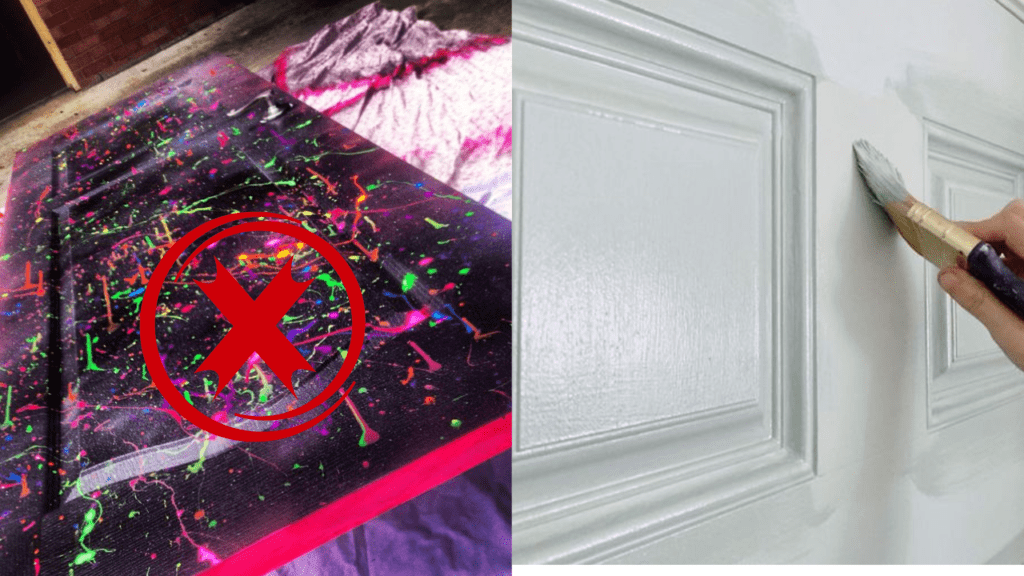
If drips occur, catch them immediately by lightly brushing them off before the paint dries. To further enhance the finish, lightly sand between coats with fine-grit sandpaper to smooth out any imperfections before applying the next coat. These techniques are especially important if you are working on previously painted surfaces, where uneven coverage can expose the old paint. In such cases, knowing how to remove paint from wood can also be helpful in stripping off uneven layers and starting fresh. By following these steps and using high-quality tools and materials, you can avoid common pitfalls and achieve a perfectly smooth, professional finish on your interior doors.
Tips for Painting Panel Doors vs. Flat Doors
Painting panel doors and flat doors require slightly different techniques to achieve a smooth, professional finish. Panel doors, with their intricate designs and raised or hollow sections, demand more attention to detail. Start painting the panels first, using a high-quality angled brush to reach corners and edges. Work in an orderly manner, painting each panel completely before moving on to surrounding frames or moldings. This prevents overlapping and ensures a consistent finish. Flat doors, on the other hand, are easier to paint, but require precision to achieve a uniform, streak-free surface.
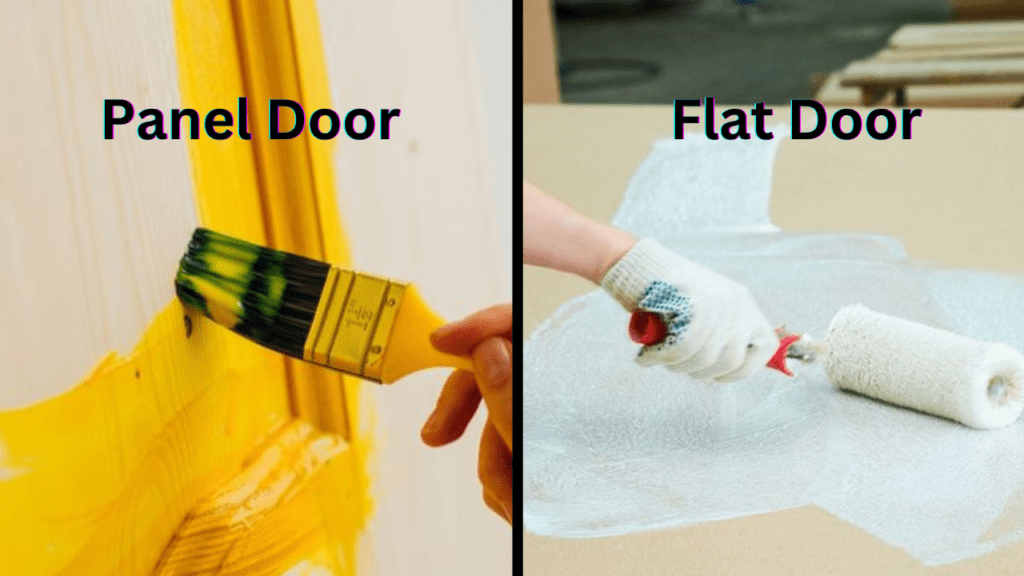
A small foam roller is ideal for flat doors, as it provides smooth, even coverage without brush marks. For both types of doors, always apply thin coats of paint to prevent drips and uneven textures. Whether you’re painting a panel or a flat door, the same principles of furniture refinishing can be applied—such as thorough preparation, sanding between coats for a flawless finish, and choosing the right tools for different surfaces. Additionally, consider removing hardware like hinges and handles before painting to ensure a clean, uninterrupted finish. With panel doors, pay extra attention to detail, and for flat doors, focus on consistent application across the entire surface. By tailoring your approach to the style of the door and using the proper techniques, you can ensure a stunning, long-lasting result that complements your home.
Common Mistakes to Avoid When Painting Doors
- Skipping Surface Preparation: Neglecting to clean, sand, or prime the door can lead to poor paint adhesion and uneven finishes.
- Using the Wrong Tools: Low-quality brushes or rollers can leave streaks, marks, or lint in the paint.
- Overloading Paint: Applying too much paint at once can cause drips, runs, and an unprofessional appearance.
- Ignoring Primer: Skipping primer, especially on raw wood or dark surfaces, can result in uneven color and poor durability.
- Not Sanding Between Coats: Failing to sand lightly between coats can leave a rough texture or trap imperfections.
- Painting Over Wet Paint: Rushing the process can cause streaking and uneven coverage; always allow adequate drying time
- .Wrong Paint Selection: Using wall paint instead of door-specific paint can result in a finish that doesn’t last.
- Painting in Poor Conditions: Painting in high humidity or extreme temperatures can affect drying time and the final finish.
- Ignoring Door Position: Painting doors while they’re hanging can lead to drips; consider removing them and laying them flat.
- Not Protecting Surrounding Areas: Forgetting to tape edges or cover floors and hardware can create unnecessary messes and cleanup.
Maintenance Tips for Painted Doors
1: Clean Regularly: Wipe doors with a soft cloth and mild soapy water to remove dirt and grime, avoiding harsh chemicals that can damage the paint.
2: Touch Up Chips Promptly: Use matching paint to repair small chips or scratches before they worsen or expose the underlying material.
3: Avoid Excess Moisture: Prevent water exposure by keeping doors dry, especially in humid areas, to avoid paint peeling or bubbling.
4: Use Door Stoppers: Protect doors from impact damage by installing door stoppers or soft bumpers.
5: Inspect Annually: Check for wear, discoloration, or damage and plan for touch-ups or repainting as needed to maintain their appearance.
Conclusion
Painting your interior doors is a simple yet effective way to refresh the beauty of your home and protect your doors for years to come. By choosing the right paint, using the proper techniques, and avoiding common mistakes, you can achieve a professional finish that elevates your living space. Don’t forget to maintain your newly painted doors with regular maintenance to keep them looking their best.
Take the first step toward a fresh and polished look for your home! Gather your tools, choose your paint, and start transforming your interior doors today. For more tips and inspiration on projects like removing paint from wood or refinishing furniture, explore our resources and get expert guidance to make every project a success.


